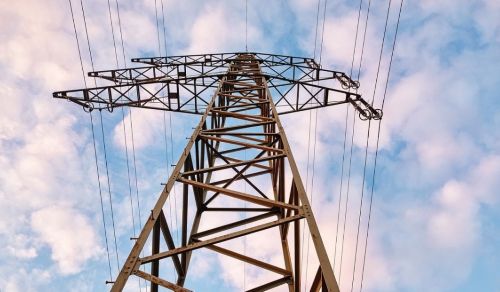

Have you ever experienced a sudden power trip that shut down your devices, halted your work, or disrupted your day? For decades, traditional Miniature Circuit Breakers (MCBs) have been the backbone of electrical safety, automatically shutting off circuits during overloads or faults. However, as the demand for energy efficiency, automation, and smarter control grows, these conventional systems are struggling to keep up.
Enter smart MCBs — the next generation of circuit protection. These devices go far beyond basic safety functions, offering intelligent monitoring, data insights, and automation that redefine how we manage and optimize power consumption. Whether in homes, offices, or industries, smart MCBs are transforming the way we think about energy — making power systems not just safer, but smarter and more sustainable.
The Limitations of Traditional MCBs
Traditional MCBs are reliable protectors but limited in scope. They perform a simple yet vital role: automatically cutting off electrical flow when the current exceeds safe levels. Yet, in today’s world of connected devices and fluctuating energy demands, that’s no longer enough.
Here are the key limitations of conventional MCBs:
- Lack of visibility: They cannot track or display real-time data about electricity usage.
- Manual intervention: If a trip occurs, it must be manually inspected and reset.
- Reactive protection: They respond after a problem occurs, not before.
These shortcomings create pain points for modern consumers and businesses alike:
- Inefficient energy usage — without data insights, waste often goes unnoticed.
- Unexpected downtime — faults cause interruptions without warning.
- Higher maintenance costs — problems are fixed reactively instead of preventively.
As our reliance on electricity grows, so does the need for smarter, data-driven solutions — and that’s exactly where smart MCBs come in.
What Makes Smart MCBs Different?
Real-Time Power Monitoring
A smart MCB doesn’t just protect your circuit — it monitors it continuously. Equipped with built-in sensors and communication modules, it measures voltage, current, and load variations in real time. This data is transmitted to a central dashboard or mobile application, where you can track performance at a glance.
Benefits of real-time monitoring:
- Immediate alerts for abnormal power usage
- Detailed insights into energy consumption patterns
- Early detection of faults and potential equipment failure
For example, if an appliance starts drawing more current than usual, a smart MCB can alert you instantly. This allows you to address the issue before it escalates into a major problem or electrical hazard.
Remote Control and Automation
Smart MCBs enable remote control capabilities through Wi-Fi or IoT integration. You can turn circuits on or off from anywhere using a connected app or system — ideal for energy management in smart homes, offices, and factories.
Key automation features include:
- Scheduled operation: Automatically power equipment on/off at set times.
- Load optimization: Distribute power more efficiently across systems.
- Demand response: Adjust consumption during peak hours to save costs.
Imagine turning off an entire floor’s lighting or equipment remotely after hours, or having your system automatically cut power to non-critical loads during peak demand — all at the touch of a button.
Predictive Maintenance and Safety
Unlike traditional breakers that simply trip when overloaded, smart MCBs continuously analyze circuit behavior. They detect subtle irregularities — such as arc faults, thermal overloads, or leakage currents — long before a failure occurs.
Predictive safety features include:
- Thermal monitoring to prevent overheating and fires
- Arc fault detection for early identification of dangerous sparks
- Leakage current analysis to protect both devices and users
This predictive approach reduces downtime, enhances reliability, and extends the lifespan of connected equipment.
The Benefits of Smart MCBs
Smart MCBs offer a wide range of benefits that make them indispensable for the future of power monitoring.
| Feature | Benefit |
| Real-time data | Continuous visibility and insights |
| Remote control | Flexibility and convenience |
| Predictive safety | Prevents damage before it occurs |
| Energy analytics | Enables optimization and cost savings |
| IoT integration | Seamless connectivity and automation |
Energy Efficiency and Sustainability
Smart MCBs allow users to track exactly where energy is being consumed and wasted. By analyzing these trends, you can make targeted improvements — such as scheduling equipment shutdowns or identifying inefficient devices. Over time, this leads to significant reductions in energy waste and carbon emissions.
Reduced Maintenance Costs
With predictive analytics, smart MCBs alert you to potential issues before they cause failures. This proactive approach drastically cuts maintenance expenses and downtime, especially in industrial settings where interruptions can be costly.
Improved Operational Safety
Smart MCBs create safer environments by minimizing the risk of electrical fires, short circuits, and overloads. With automatic fault isolation and instant notifications, you can respond faster to potential hazards.
Data-Driven Decision-Making
Energy data is valuable. Smart MCBs turn ordinary circuits into data sources, giving you the power to make informed decisions — from budgeting electricity costs to improving overall system design.
Applications Across Different Sectors
Residential Use
In smart homes, smart MCBs make power management intuitive. You can monitor your home’s consumption, schedule appliance usage, and receive safety alerts — all through your smartphone. The result is a home that’s more energy-efficient, safer, and easier to manage.
Commercial Buildings
Businesses benefit from the scalability of smart MCB systems. Office buildings, hotels, and shopping centers can analyze energy use across different zones, reducing waste and optimizing costs. The ability to automate and remotely manage power adds another layer of convenience.
Industrial Operations
Factories and manufacturing plants depend on stable, uninterrupted power. Smart MCBs provide machine-level monitoring, predictive fault detection, and integration with industrial IoT platforms. This ensures maximum uptime, minimal energy loss, and enhanced equipment longevity.
Integration With Smart Grids and IoT Ecosystems
Smart MCBs are not standalone devices — they are essential components of a broader, connected energy network. When integrated with smart grids and IoT platforms, they enable seamless communication between consumers, utilities, and energy management systems.
How smart MCBs enhance grid performance:
- Provide real-time consumption data for efficient load balancing.
- Enable AI-driven demand forecasting for utilities.
- Support renewable integration by managing distributed generation from solar and wind sources.
This interoperability supports a more intelligent, sustainable energy ecosystem — one where every device, from home appliances to industrial systems, contributes to global energy efficiency.
The Future of Power Monitoring
The global transition to smart power systems is unstoppable. As energy demands grow and sustainability becomes non-negotiable, smart MCBs will play a central role in modern electrical networks. They will not only protect circuits but also provide the intelligence needed to build efficient, responsive, and eco-friendly infrastructures.
Leading innovators like CHINT are at the forefront of this transformation, offering MCBs that deliver reliable overload and short-circuit protection with rated currents up to 100A and breaking capacities up to 10kA. Built to international standards such as IEC60898-1 and featuring options for B, C, and D curves, CHINT MCBs ensure safe, efficient performance across residential, commercial, and industrial applications.
Imagine a world where every home, building, and factory knows exactly how much power it consumes, predicts faults before they occur, and optimizes energy use in real time. That’s the promise of smart MCBs — and it’s already becoming reality.
Conclusion
Smart MCBs are revolutionizing the future of power monitoring. By combining advanced protection, real-time data, and IoT connectivity, they empower users to manage electricity with precision and confidence. From energy savings to predictive maintenance and enhanced safety, the benefits are transformative.
As technology continues to evolve, smart MCBs will become the foundation of intelligent energy systems — enabling a future that’s not only smarter but also more sustainable, secure, and efficient for everyone.


